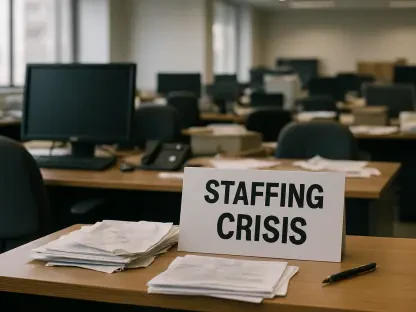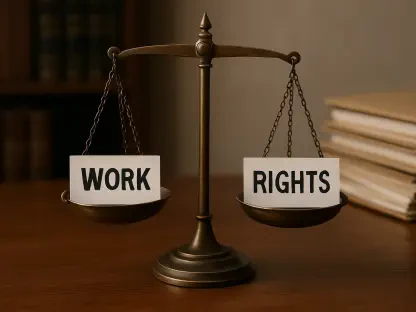Recent developments in the judicial realm reflect the complex interplay between executive power and the safeguarding of diversity and inclusion initiatives. The case in point involves a recent ruling by U.S. District Court Judge Jon Tigar, who addressed contentious executive orders issued by the Trump administration. These orders aimed to curb diversity, equity, and inclusion (DEI) initiatives, spotlighting what was described as “gender ideology.” The orders ignited legal challenges led by nonprofit organizations that cater to marginalized communities, particularly the LGBTQ+ demographic. This lawsuit, propelled by entities like the San Francisco AIDS Foundation and the Los Angeles LGBT Center, asserted the breach of their constitutional rights due to the provisions contained within the executive orders.
Judge Tigar’s ruling was pivotal as it underscored the limitations of executive power, highlighting that the executive branch cannot leverage federally allocated resources in ways that disadvantage protected groups or suppress the expression of ideas that do not align with its agenda. The ruling prohibited agencies from terminating funding for programs related to equity grants or those promoting gender ideology. However, the ruling was not universally favorable to the plaintiffs, as some challenges were deemed insufficient by the court due to inadequate evidence regarding compliance with federal anti-discrimination laws. This decision is part of a larger judicial trend that sees cases against executive orders vacillating between victories and setbacks for challengers, which illuminates the ongoing legal dynamics regarding the extent of executive authority.
Judicial Checks on Executive Power
The ruling by Judge Tigar is a salient example of how the judiciary functions as a critical check on executive power, especially regarding initiatives that pertain to civil rights and anti-discrimination. This decision further fortified the principle that executive actions must not infringe upon constitutional rights or stifle initiatives fundamental to promoting diversity and inclusion. The court’s prohibition against the enforcement of actions that would halt equity-related grants and DEI programs was a significant affirmation of this principle. Through this ruling, the judiciary reaffirmed its role as a guardian against potential executive overreach, ensuring that federal authority does not compromise or suppress the voices and rights of marginalized communities.
Past legal disputes also illuminate the unpredictability and complexity inherent in contesting such executive directives. Earlier attempts to block similar anti-DEI orders met temporary success but faced challenges upon appeal, showcasing the intricacies of navigating federal judicial systems. As such, outcomes often reflect a delicate balance between executive prerogative and constitutional protections. This ongoing legal discourse underscores the dynamic relationship between those wielding governmental authority and the protected rights of individuals and communities that may find themselves marginalized by those in power. It highlights an essential aspect of democracy, where the courts preserve the rights of all, regardless of executive orders intent on altering or suppressing those rights.
Triumphs and Challenges in Legal Endeavors
The legal tussles surrounding executive orders targeting DEI initiatives reveal broader insights into the judicial landscape. Successful challenges, such as Judge Tigar’s recent ruling, demonstrate the judiciary’s essential role in preserving constitutional rights against potentially discriminatory executive actions. Yet, not all challenges succeed, as illustrated by the court’s dismissal of certain claims due to lack of evidence. These mixed results highlight the nuanced nature of legal battles concerning executive orders, where prevailing in court can be uncertain and heavily reliant on presenting a sufficient factual basis.
This pattern of fluctuating judicial outcomes underscores the continued need for robust advocacy and strategic legal challenges aimed at preserving rights under threat. Organizations involved in these lawsuits often face resource constraints and the daunting task of navigating a fragmented legal terrain where the outcome is far from guaranteed. While these legal battles are arduous, they play a crucial role in reinforcing the principles of equity and inclusion, ensuring that executive power does not go unchecked. This ongoing dialogue between branches of government reflects a nation that continuously grapples with balancing executive ambitions with foundational democratic ideals and the promise of equality for all its citizens.
Looking Forward with Renewed Perspectives
Recent judicial activities reveal the intricate relationship between executive authority and the protection of diversity and inclusion efforts. A notable case involves U.S. District Court Judge Jon Tigar’s assessment of executive orders from the Trump era, designed to limit diversity, equity, and inclusion (DEI) initiatives. These orders targeted “gender ideology,” leading to lawsuits from nonprofits serving marginalized communities, specifically the LGBTQ+ population. Groups like the San Francisco AIDS Foundation and Los Angeles LGBT Center argued the orders violated their constitutional rights.
Judge Tigar’s decision was crucial, emphasizing that executives cannot use federal funds to disadvantage protected groups or silence ideas conflicting with their agenda. The ruling blocked government agencies from cutting funds for equity-related programs or those endorsing gender ideology. However, the court dismissed some claims due to insufficient evidence on compliance with anti-discrimination laws. This decision adds to the ongoing legal debates about executive power, showing a pattern of fluctuating results for challenges against executive orders, highlighting the evolving nature of legal interpretations of executive authority.









